
REGISTRATION IS NOW CLOSED
3D Printing of Ceramics
Join ACerS and MRS for a two-day virtual workshop, April 12–13, 2022, 10 a.m. – 1:30 p.m. ET
The two, half-day 3D Printing of Ceramics Virtual Workshop will bring together 20 leading experts
from academia, industry, and clinical backgrounds to share their discoveries and insights. Due to
their high melting point and inherent brittleness, ceramic parts are traditionally manufactured in
green form using powders with additives. Green structures are heat treated to remove the binder
and then densify or sinter them. Over the past three decades, 3D printing technologies have
been applied to ceramic processing to manufacture a variety of complex shapes and coatings
for numerous applications. Most 3D printing technologies have been applied to manufacture
green ceramic parts with unique shapes. This virtual ACerS-MRS workshop will focus on the
processing and characterization of 3D printing technologies of advanced ceramics for aerospace,
biomedical, defense, and piezoelectric applications.
The workshop will consist of twelve talks, Q&A sessions with presenters and moderated panel
discussions over two days, plus coffee break chats each day.
Topics will include:
• Additive manufacturing methods
• Applications
• Emerging technologies
• Commercial manufacturing
This workshop is attractively priced with highly relevant topics to advance your research or business.
Organizers

Shawn Allan, Lithoz-America
Bio: Allan is the Vice President and a Materials Engineer with Lithoz America, LLC, since 2017. He holds degrees in Materials Science & Engineering from Alfred University (BS) and Georgia Tech (MS), and has worked in ceramic and materials process technologies from formulation, to forming (including additive manufacturing), and sintering.

Susmita Bose, Washington State University
Bio: Bose is a professor at the School of Mechanical and Materials Engineering, affiliate faculty of the Department of Chemistry, and Elson Floyd College of Medicine at Washington State University. Bose is a fellow of ACerS and MRS. Among other awards, she has received the ACerS PACE and Fulrath awards. She has advised over 40 graduate students, MS and PhD, published over 240 journal articles, 13 issued patents, 24 book chapters, 9 edited books, citations over 25,000 times, “h” index 81. She is a fellow of the AAAS, National Academy of Inventors, ASM International, American Institute for Medical and Biological Engineering, the Royal Society of Chemistry, and an elected member of Washington State Academy of Sciences.

Amit Bandyopadhyay, Washington State University
Bio: Bandyopadhyay is a professor in the School of Mechanical and Materials Engineering at Washington State University. He has worked with 22 PhD and 30 MS students, is an inventor of 21 issued patents, and has published over 360 technical articles. His work has been cited over 27,000 times and the current "h" index is 87 (Google Scholar). Among others, he is a Fellow of the American Ceramic Society, American Association of Advancement of Science, National Academy of Inventors, and an elected member at the Washington State Academy of Science.
Day 1, Session 1: Tuesday, April 12
10:00 - 11:15 a.m. EDT

Paulo Colombo, University of Padova, Italy
Bio: Colombo is a professor at the Department of Industrial Engineering, University of Padova, Italy, an adjunct professor in the Department of Materials Science and Engineering at the Pennsylvania State University, and a visiting professor in the Department of Mechanical Engineering of University College London. He was a Foreign Scientist at INSA, France in 2015 and a DFG Mercator Professor at the Technical University Bergakademie Freiberg, Germany in 2016. He is an Academician of the World Academy of Ceramics, Academician of the European Academy of Sciences, Fellow of the American Ceramic Society, Fellow of the Institute of Materials, Minerals and Mining, Fellow of the European Ceramic Society. He was awarded a Fulbright Scholarship for the Pennsylvania State University, the Pfeil Award (IOM3, UK), the Global Star Award (ACerS), the Edward C. Henry Award (ACerS), the Verulam Medal & Prize (IOM3), the Global Ambassador Award (ACerS) and the Polish Ceramic Society Award. He is president-elect of the International Ceramic Federation (ICF) and is Editor-in-Chief of Open Ceramics.
Topic: Additive Manufacturing of Ceramics using Preceramic Polymers

Susmita Bose, Washington State University
Bio: Bose is a professor at the School of Mechanical and Materials Engineering, affiliate faculty of the Department of Chemistry, and Elson Floyd College of Medicine at Washington State University. Bose is a fellow of ACerS and MRS. Among other awards, she has received the ACerS PACE and Fulrath awards. She has advised over 40 graduate students, MS and PhD, published over 240 journal articles, 13 issued patents, 24 book chapters, 9 edited books, citations over 25,000 times, “h” index 81. She is a fellow of the AAAS, National Academy of Inventors, ASM International, American Institute for Medical and Biological Engineering, the Royal Society of Chemistry, and an elected member of Washington State Academy of Sciences.
Topic: 3D printed ceramics with natural medicines for bone regeneration: convergence of knowledge
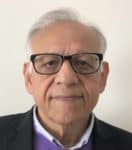
Ahmad Safari, Rutgers University
Bio: Safari is a distinguished professor of the Department of Materials Science and Engineering, and Director of Glenn Howatt Electroceramic Laboratory at Rutgers University. His main field of interest includes structural property relationships in electroceramic materials for dielectric, piezoelectric, and ferroelectric applications, thin films, ceramic-polymer composites for transducers, and additive manufacturing. He has published over 400 articles and book chapters and edited a book, and has been granted 22 patents. Safari is a Fellow of the ACerS, IEEE UFFC-Society, and a member of the World Academy of Ceramics. He is past president of the IEEE UFFC Society, and recipient of the IEEE UFFC Society's Robert E. Newnham Ferroelectrics Award, Ferroelectrics Recognition Award, Distinguished Service Award, the US-Japan Bridge Building Award, and the Rutgers University Donald H. Jacobs Chair in Applied Physics.
Topic: Advances on additive manufacturing for dielectric, piezoelectric, and ferroelectric devices
Day 1, Session 2: Tuesday, April 12
11:30 a.m. - 1:30 p.m. EDT
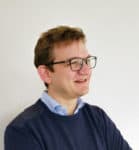
Guillaume de Calan, Nanoe, France
Bio: Guillaume de Calan is the co-founder and CEO of Nanoe, a leading supplier of high tech raw materials for the ceramic industry. Through their brand Zetamix, Nanoe launched the first line of filaments for accessible 3D printing of ceramic and metal parts. At Nanoe, they believe material innovation is at the core of new emerging technologies such as 3D printing, Li Ion batteries, medical implants and many more, and strive to develop and produce best in class raw materials for these applications.
Topic: Extrusion based 3D printing
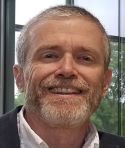
Rodney Trice, Purdue University
Bio: Trice, whose home department is in the School of Materials Engineering at Purdue University, has focused on many fundamental and applied research topics over the last 25 years. He is currently investigating the following hypersonic related topics in the ceramics processing area: high-temperature high-emissivity coatings, processing of IR and RF windows, additive manufacture of C/C composites, direct ink write of SiC short fiber/SiC composites, digital light projection (DLP) of UHTCs, and powder-processing schemes to fabricate ceramics into complex shapes. His current research is supported by ONR, ARPA-E, BETO, Draper Labs, AFRL and industrial sources. He currently advises 10 PhD and 1 MS students. He is a Fellow of the American Ceramics Society.
Topic: The influence of print layer orientation on the mechanical properties of SiC and Cf/SiC CMCs formed via direct ink writing

Cathleen Hoel, GE Research
Bio: Hoel joined the General Electric Research Center in 2010 where she is evaluating additive manufacturing as a process to fabricate complex ceramic components. She is identifying where additive ceramics can play a disruptive role to enable next generation technology and fabricating prototypes. Previously she worked on thermal barrier coatings to increase their capability in extreme environmental conditions and forming complex ceramic components. Hoel has worked with interdisciplinary teams to develop and support the transition of ceramic processing methods from lab scale to pilot scale and beyond. She received her PhD degree in chemistry from Northwestern University in 2010 and a BA degree in chemistry from Washington University in St. Louis in 2006.
Topic: Industry perspective of 3D printing of ceramics
Day 1 Panel Discussion
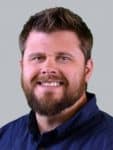
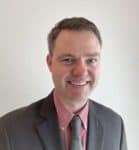
Dale Cillessen, Sandia National Laboratories
Bio: Cillessen is a Senior Member of the Technical Staff in the Applied Science Technology Maturation Department at Sandia National Laboratories in Albuquerque, NM. Dale is the engineering operational lead of Sandia’s metal and ceramic printing facility. His research focuses on developing accurate, repeatable, structurally sound advanced manufactured components.
Topic: Validation/characterization of 3D printed ceramics

Matt Dickerson, AFRL
Bio: Dr. Matthew Dickerson is a Senior Materials Research Engineer at the US Air Force Research Laboratory in the Materials and Manufacturing Directorate. Dr. Dickerson’s research is centered on materials chemistry and processing approaches to deliver high-temperature solutions for the Department of the Air Force. This research includes preceramic polymer synthesis, ceramic additive manufacturing, bioinspired ceramics, and self-assembly approaches to novel materials.
Topic: Additive manufacturing of ceramics for aerospace
Day 2 Session 1: Wednesday, April 13
10:00 - 11:15 a.m. EDT
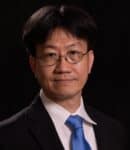
Y. Kevin Chou, NSF-Eng-CMMI
Bio: Chou is a program director at the National Science Foundation (as IPA), joined in April 2020 from University of Louisville, where he is the Edward R. Clark Chair of Advanced Manufacturing. Chou received his PhD degree from Purdue University and post-doc training from National Institute of Standards and Technology. He is a Fellow of the American Society of Mechanical Engineers and the Society of Manufacturing Engineers (SME). Chou is the recipient of 2016 Dick Aubin Distinguished Paper from SME. From 2014 – 2015, he served as the Assistant Director for Technology in the Advanced Manufacturing National Program Office, supporting the Manufacturing USA initiative.
Topic: Challenges and Opportunities in Future Ceramic Additive Manufacturing – An NSF Perspective

Andrew Rosenberger, US Army Research Lab
Bio: Rosenberger is a materials engineer at the U.S. Army Combat Capabilities Development Command (DEVCOM) Army Research Laboratory Ceramics and Transparent Materials branch. Prior to joining ARL in 2018, he worked as a Research Scientist at DePuy Synthes on developing metal and ceramic additive manufacturing technologies for orthopedic implants. He received a PhD in Materials Science and Engineering from Purdue University in 2015. His research efforts are focused on processing ceramics with hierarchical bioinspired microstructures and multi-material interfaces through conventional and additive methods to enable technologies for enhanced soldier protection and lethality.
Topic: Advanced Manufacturing for the Pursuit of Heterogeneous Ceramic Design
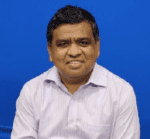
Bikramjit Basu, Indian Institute of Science, Bangalore
Bio: Basu is a professor at the Indian Institute of Science, Bangalore. He received the Government of India’s most coveted science and technology award, Shanti Swarup Bhatnagar Prize in 2013 for his contributions to the field of Biomaterials Science. A Chartered Engineer of the UK, he is an elected Fellow of the Indian National Science Academy (2021), International Union of Societies for Biomaterials Science and Engineering (2020), International Academy of Medical and Biological Engineering (2020), Indian Academy of Sciences (2020), American Ceramic Society (2019), American Institute of Medical and Biological Engineering (2017), Institute of Materials, Minerals & Mining, UK (2017), National Academy of Medical Sciences, India (2017), Indian National Academy of Engineering (2015), Society for Biomaterials and Artificial Organs (2014) and National Academy of Sciences, India (2013). He is the recipient of the Richard Brook International Prize from the European Ceramic Society (2022). He is currently the President of the Society for Biomaterials and Artificial Organs, India.
Topic: 3D printing of implantable biomaterials and implants: Opportunities and challenges
Day 2 Session 2: Wednesday, April 13
11:30 a.m. - 1:30 p.m. EDT
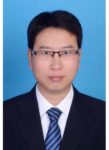
Fangyong Niu, Dalian University of Technology, China
Bio: Niu is an associate professor and master supervisor in the School of Mechanical Engineering, Dalian University of Technology. He is a member of the ASM and the Chinese Society of Mechanical Engineering. Niu’s research interests are in the area of additive manufacturing, remanufacturing and laser manufacturing, especially in the field of laser directed energy deposition of ceramics and cermet functionally graded materials. He has authored over 70 refereed publications in technical journals and conference proceedings. He has written one book chapter for the ASM Handbook Volume 24 (Additive Manufacturing Processes). For his interesting research, Niu has twice received the Best Presentation Award from the 25th and the 27th Solid Freeform Fabrication Symposium (SFF).
Topic: Additive Manufacturing of Melt Growth Ceramics by Laser Directed Energy Deposition
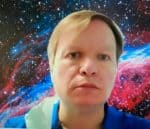
Karl-Heinz Schofalvi, Desktop Metal
Bio: Schofalvi is an innovation leader in the field of applied materials science and hold 14 US patents in a variety of applications. Educated as a Chemist and Polymer Scientist focused in Ceramic Processing, Mr. Schofalvi's first role post-graduate was working on high temperature composites for the X-30 while at NASA. He then spent five years in corporate R&D specializing in binder systems for particulate materials such as powder injection molding before becoming an independent consultant and start-up entrepreneur. During the next 18 years (1993-2011), Mr. Schofalvi completed over 75 consulting jobs (across the spectrum of metal, polymer and ceramic manufacturing) and founded six materials science companies with 2 successful exits, 2 failures and 2 that are still active. In 2012, Mr. Schofalvi accepted a management role Koch Knight LLC and transitioned to Desktop Metal in October of 2020, which is one of Koch Industries' investments. He remains active on the boards of three of start-ups as well as several community volunteering activities.
Topic: Binder jet printing of ceramics

Shawn Allan, Lithoz America
Bio: Shawn Allan is the Vice President and a Materials Engineer with Lithoz America, LLC, since 2017. He holds degrees in Materials Science & Engineering from Alfred University (BS) and Georgia Tech (MS), and has worked in ceramic and materials process technologies from formulation, to forming (including additive manufacturing), and sintering.
Topic: Lithography-based ceramic additive manufacturing
Day 2 Panel Discussion
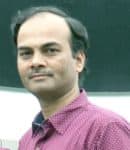
Vamsi Krishna Balla, CSIR-Central Glass and Ceramic Research Institute; Academy of Scientific and Academy of Scientific and Innovative Research (AcSIR), India
Bio: Balla is Chief Scientist and Head, Bioceramics and Coating Division at CSIR-Central Glass and Ceramic Research Institute, Kolkata and a professor at the Academy of Scientific and Innovative Research (AcSIR), Ghaziabad, India. He has made significant research contributions in the area of additive manufacturing of materials, biomaterials, implants design and development, microstructure-process-property correlations. Balla has been ranked amongst the top 0.86% scientists in the world in the “Materials” sub-field in the Stanford Ranking (Elsevier, 2021). He is also instrumental in several technology developments and technology transfers at CSIR-CGCRI, Kolkata. He is serving as Associate Editor for three international journals and panel member for several international funding agencies. His publications include 184 peer reviewed journal articles, nine book chapters and his current ‘h-index’ is 48.
Topic: 3D printing of ceramics in India
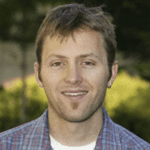
Zachary Seeley, Lawrence Livermore National Laboratory
Bio: Zachary Seeley’s work is focused on fabrication of transparent ceramic optics; including powder synthesis, slurry preparation, green structure formation, binder burnout, sintering, and densification. His area of expertise mainly includes transparent ceramics for scintillator and laser materials, with a focus on how additively manufacturing ceramics can produce tailored doping profiles of the active ions in laser gain media, resulting in enhanced performance. He has 7 awarded patents, 38 publications, and he received an R&D 100 award for his work on large area ceramic scintillator windows for use in high energy X-ray CT imaging.
Topic: Large ceramic structures/laser ceramics
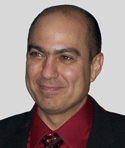
Joe Cesarano, Robocasting Enterprises LLC
Bio: Dr. Cesarano is a scientist and entrepreneur and currently the President of Robocasting Enterprises LLC (ROBO) and serves on the Board of Trustees for Alfred University. His current responsibilities are for business and product development utilizing the additive manufacturing technology for ceramics and composites known as robocasting. Dr. Cesarano co-invented the extrusion-based additive manufacturing technique, robocasting (aka, Direct-Ink Writing) in 1996 while employed by Sandia National Labs. In 2007 he spun-off the technology to develop commercial applications and founded ROBO. Of particular importance have been developments of periodic lattice structures for advanced filtration, catalyst supports, and load-bearing bone scaffolds as well as functionally graded materials and high-temperature heat exchangers. Dr. Cesarano is a Fellow of the American Ceramic Society and recipient of ACerS Rishi Raj Medal for Innovation and Commercialization.
Topic: Robocasting of ceramics
Registration rates
| Regular rate | $125 |
| ACerS/MRS member rate* | $100 |
| Student rate | $45 |
| ACerS/MRS student member rate* | $25 |
Sponsors


